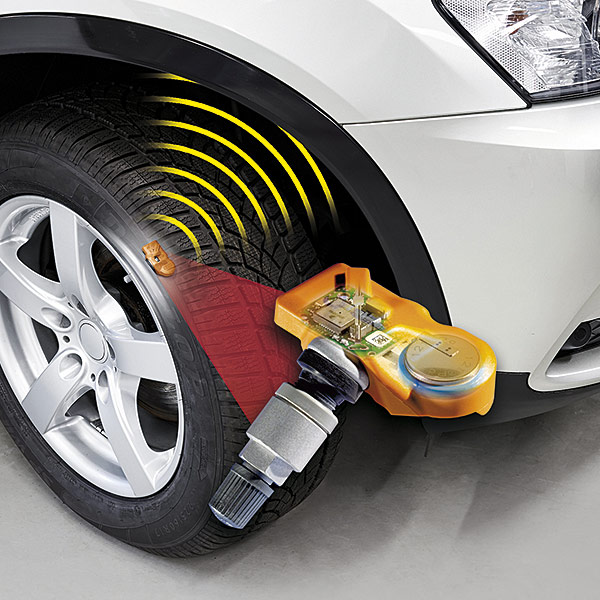


Now you may order even a better version of the previous TPMS sensor. The benefits of the new version are
- smaller and lighter size
- compatibility with even more car models
- sensor designed to endure salty and snowy conditions
- possibility to update the compatibility with VT46 and VT56 diagnostic tools as new car models are included
HUF IntelliSens TPMS sensor is by far the highest quality and most versatile configurable universal sensor. The sensor is compatible with up to 98% of all car models!
HUF also produces the original TPMS sensors for most of the car manufacturers. Thus, you can replace an original sensor that has been broken with this IntelliSens sensor, or it can be used as an additional sensor set for example in winter tyres.
Check the compatibility of IntelliSens sensors and your car here.
NOTE! If you want to order the sensor already configured, order the configuration separately here. Add your car brand, model and year in the comment section.
The IntelliSens TPMS sensors can copy the information from your old sensors, which means that new configuration is not needed. The copying requires the vehicle to be present so that the information can be copied from the sensors that are currently installed. If the sensors are copied, the new sensors do not require integration (i.e. driving a certain distance OR OBD integration OR integration through trip computer).
You can check the procedures required for installing new sensors from the user manual of your vehicle.
The service life of IntelliSens sensors is long. The sensors are activated only when they are configured, and their battery is in use only when the vehicle moves.
The sensors can be configured with diagnostic tools produced by ATEQ, that you may also order from us.
Legislation
The EU directive 661/2009 states that all vehicles that have been type-approved since November 2012 and new vehicles that have been sold since November 2014 have to include a TPMS (Tire Pressure Monitoring System). In Finland, Trafi has stated that the system must be active when the vehicle is sold, and an active system must have sensors installed in the original tyres (i.e the tyres that the car is first registered with).
Even if the next tyres do not have to have the sensors installed, and you may even turn the system off, the use of TPMS system is highly recommended. The system observes the pressure of the tyres and helps to decrease emissions and costs as well as increase safety.
How does the TPMS system work?
You can observe the tyre pressure with active or passive systems. In an active TPMS system the sensor installed in the tyre will directly measure the tyre pressure and temperature. The passive system, on the other hand, will only detect a decrease in tyre pressure that leads to a change in the rolling speed of the tyre. Both systems will warn the driver with the TPMS indicator light that will turn on in the dashboard when the tyre pressure decreases to 25% below the recommended tyre pressure.
Recognizing new TPMS sensors
For your vehicle to be able to recognize the new sensors and the TPMS indicator light to turn off, your vehicle must go through relearning. There are three basic ways to do this:
Benefits
The TPMS systems and maintaining the correct tyre pressure have a huge impact on safety and economical driving.
Safety
The correct tyre pressure ensures maximum performance. When the tyre pressure is correct, the tyre will roll lightly and steer precisely. Wrong tyre pressure will decrease the grip of the tyre which will lead to longer braking distances and higher chance of aquaplaning.
Tyre service life
Too low tyre pressure will shorten the service life of the tyre. When the tyre pressure is low, the tyre will wear faster, and the temperature of the tyre will rise, durability will decrease, and the chance of the tyre bursting will increase.
Fuel efficiency
When the tyre pressure is low, the rolling resistance of the tyre is higher which means that the tyre requires more energy to roll. This, in turn, will lead to increased fuel consumption.